Omalos Plateau
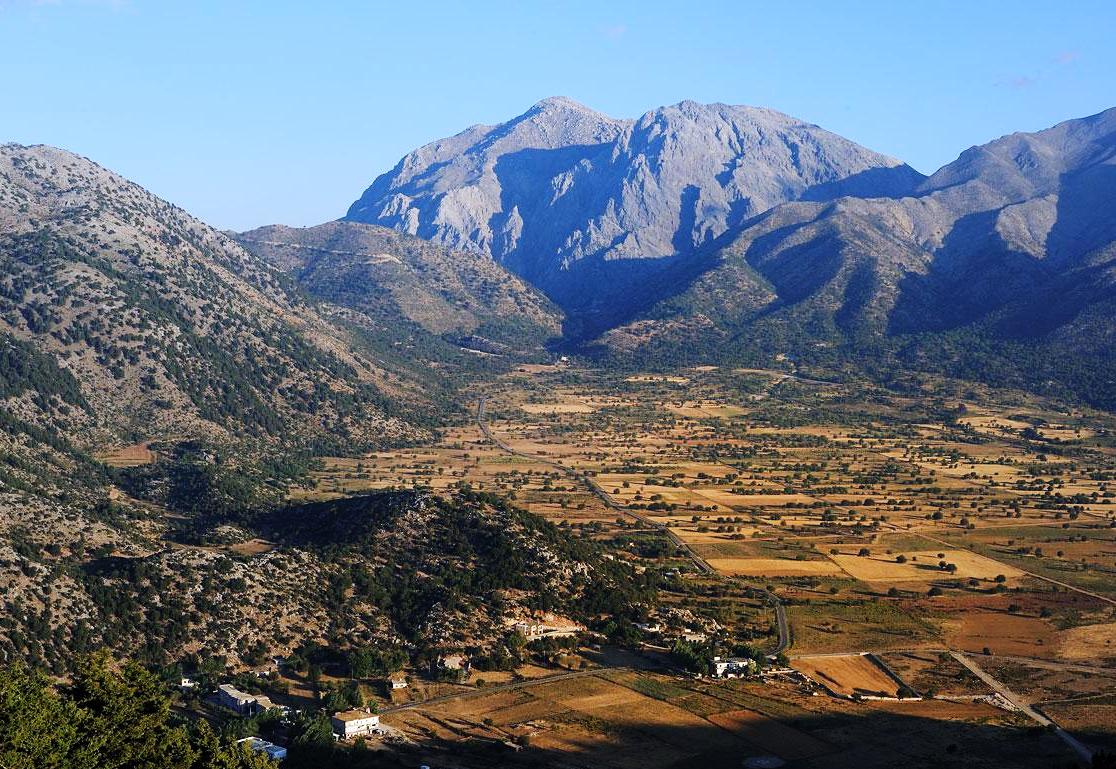

The plateau of Omalos is one of the few plains in Crete, lies about 35 km south-west of Chania, at an altitude of just over a kilometer, among the highest peaks of the White Mountains (Levka Ori). Most tourists know it as a staging post on the way to the Samaria Gorge.
Due to the cold and the huge amount of snow in winter, Omalos has historically had no villages of permanent settlements, only summer houses used by residents – shepherds from villages of Lakkoi and Agia Erini in the foothills of the White Mountains. The soil of Omalos is fertile and actively used for cattle breeding, and growing crops. The entire plateau is lined with rectangles of fields and pastures. Here you can also see small round stone mitata-houses – shelters of shepherds. They are also used to prepare cheeses. The plateau is important as a station for moving sheep from lower winter pastures to the summer ones higher in the mountains in spring and back in autumn.
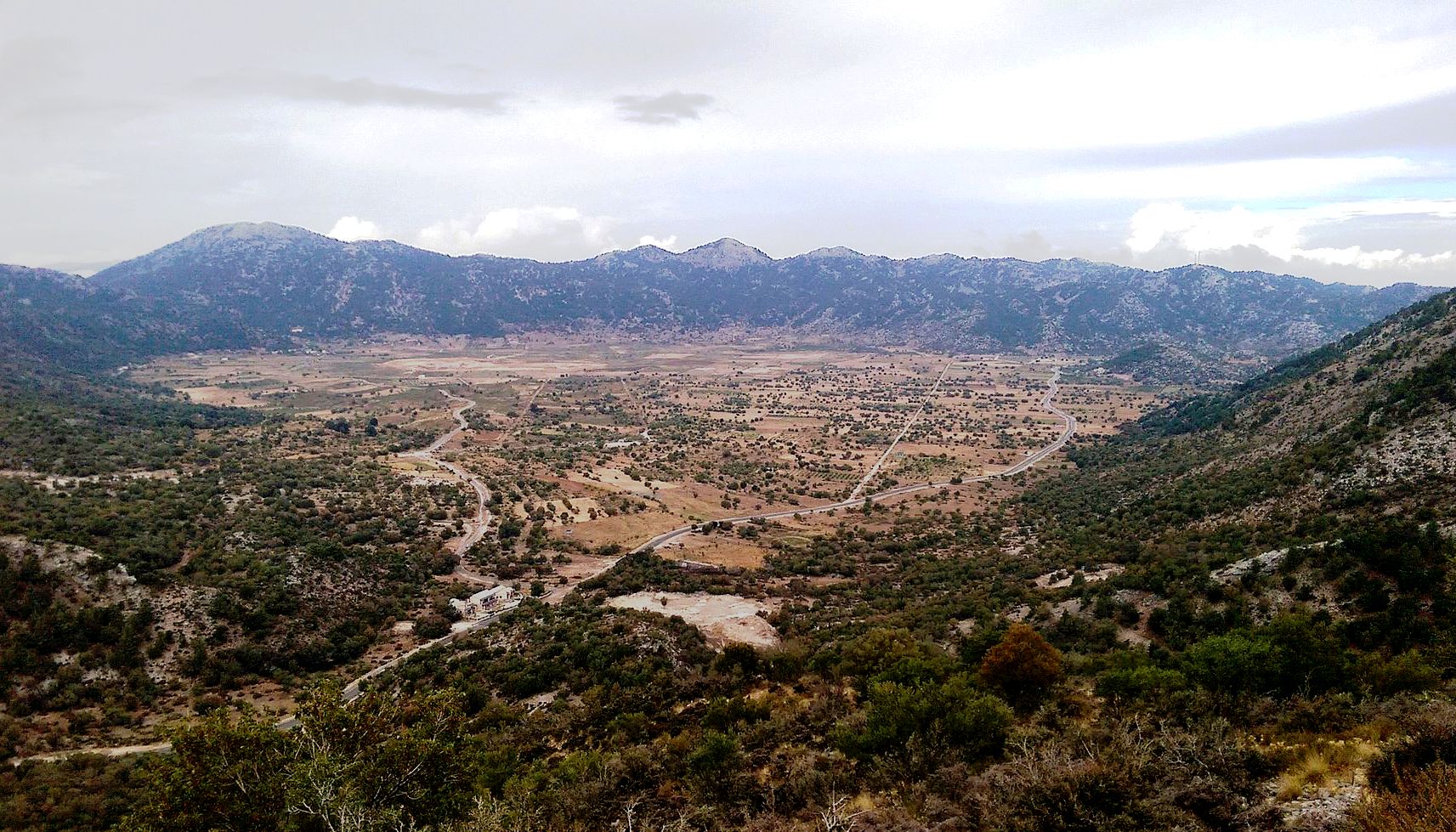
Currently, there are roads and electricity here, and several families live year-round, running hotels, and taverns. They started by serving tourists traveling in the Samaria Gorge, but over the past decades, winter tourism has also begun to develop here. Omalos is incredibly beautiful when many of the peaks are covered with snow. It has become a popular winter weekend destination for residents of coastal towns. They are happy to come for a walk in the snow and have lunch then in one of the good restaurants.
In spring, the snow begins to melt profusely, forming on the plateau small lakes. By the middle of the season, the water basically dries up, giving its strength to grasses and flowers, and the plateau transforms beyond recognition. For example, from April to May, Omalos is covered with a carpet of blooming endemic tulips, Tulipa Bakeri. This is the best time for walking. True, it can be chilly here; so, it is better to bring warm clothes with you.
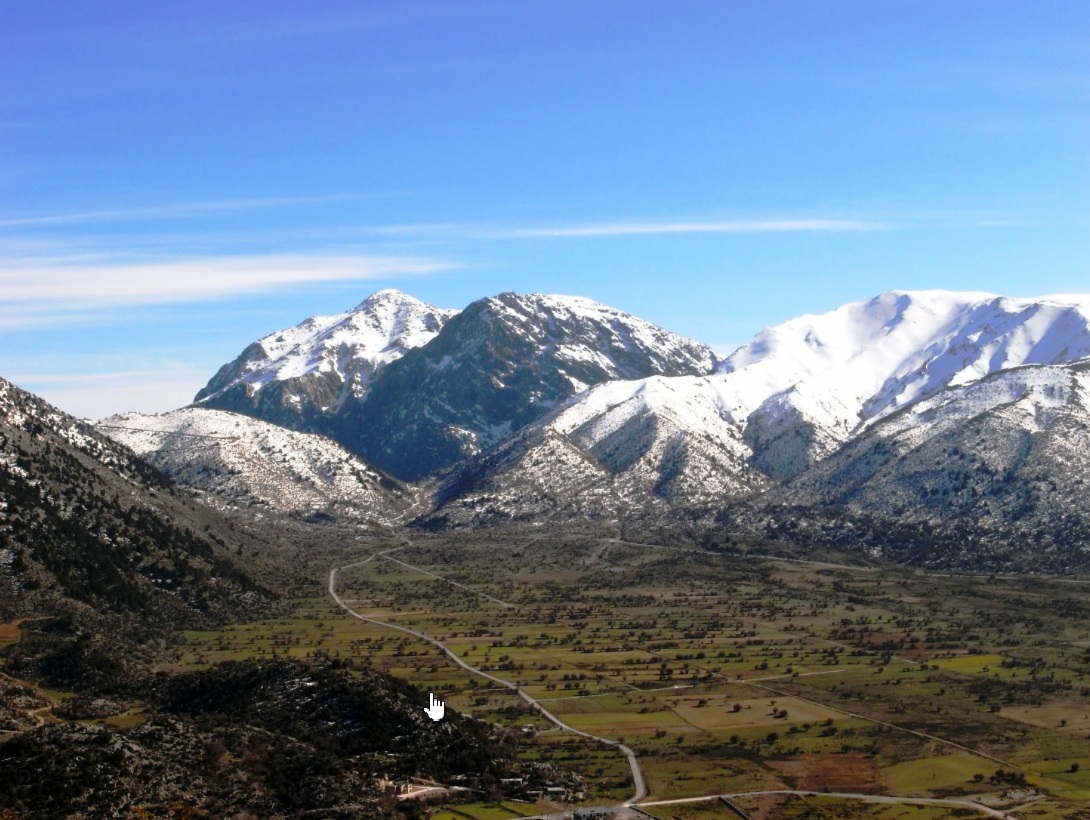
In the northern part of the plateau (at the entrance from Chania), there is a tiny village of Omalos with taverns and cafes, where you can grab a bite to eat before your long hike, as well as several hotels for independent travelers. Omalos is the perfect place to spend a night if you want to get up early in the morning and walk down the famous Samaria Gorge without the crowds of tourists. The alpine village of Xyloskalo at the entrance to the Samaria Gorge is located just 4 km from the village of Omalos. Two peaks rise above Xyloskalo, which is located at an altitude of 1250 meters: Gigilosis (2080 m) and Volakias (2116 m). A legend associates both of them with the throne of Zeus, who was born in Crete.
From the little village of Omalos you can drive further towards Sougia and Paleochora, the resorts on the southern coast of Crete.
Cave of Tzanis
If you look at the plateau from above, you can see that it is almost round, with a diameter of about 2.5 km – it was even used as an airfield during the Second World War. Geographers believe that in the distant past, the plateau was a lake that lost water through the cave of Tzanis. The cave is to the left of the winding road from Omalos that descends towards Chania: about 1.6 km from the village.
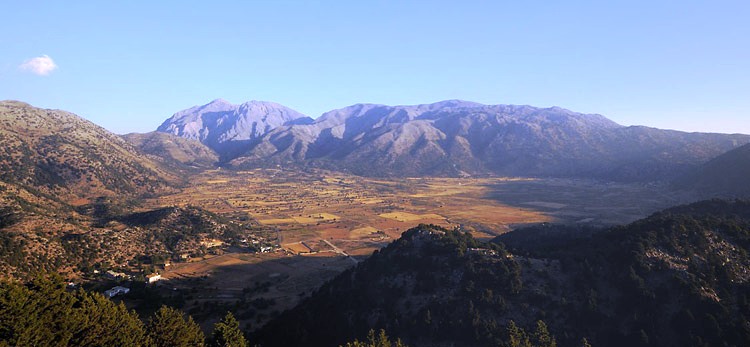
Google Maps coordinates: 35.34975628481579, 23.907788946560412.
The cave is over 2.5 km long and 281 meters deep. It is of particular ecological importance as a home for many species of birds and animals, in particular bats, and also serves as a natural drainage for the waters of the entire plateau of Omalos.
The cave is named after Markos Tzanis (nicknamed Phobos), a chieftain of the early years of the Turkish occupation of Crete, who used the cave as his base. According to legend, once, he took refuge in the cave, fleeing from enemies, but never left it again. As states in a version of the said legend, the fairies, who lived there, were fascinated by sounds of his lyre and kidnapped him to accompany their dances. It gave birth to a tradition of the past: musicians gathered in the cave and played the lyre in honor of Tzanis.
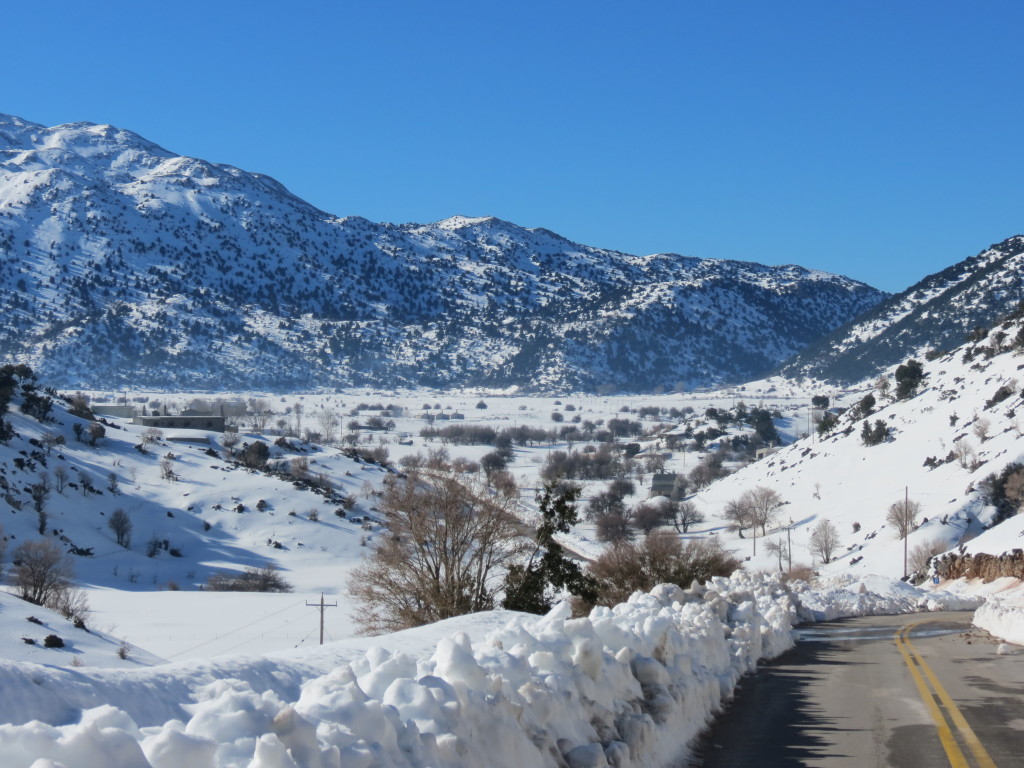
By the way, due to its inaccessibility, the plateau played an important role in the defense of the territory from different invaders, being considered a natural fortress at all times. In most cases, Omalos remained free: the Ottoman army avoided clashes with strong combatants and rarely penetrated the plateau.
In memory of the hero
One of the most famous freedom fighters of Western Crete, Michalis Yiannaris (Hatzimihalis, 1831-1916), who was born in the neighboring village of Lakki, was buried on the plateau of Omalos. Yiannaris played a central role in the uprising of 1855-1856 and in revolution of 1866-1869. He was captured several times by the Ottoman occupation forces but always managed to escape. His most impressive escape was from the Firkas fortress (in the Venetian harbor of Chania). At that time, it was considered impossible.
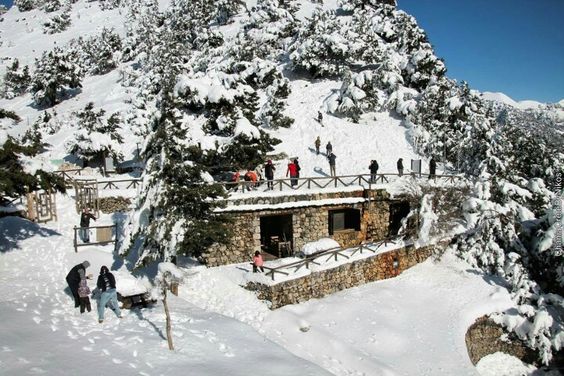
From 1870 to 1877 he lived in Russia. In 1912 Yiannaris became a member of the Cretan Parliament from Chania. In December 1913, the official ceremony of the reunification of Crete with Greece took place in Chania, during which Yiannaris, together with another veteran of the Cretan uprising and fellow villager A.Mandakas, raised the Greek flag over the Ottoman fortress of Firkas, where he was once a prisoner. He died at the age of 85 after seeing the fulfillment of his dream of a free Crete. At his wish, he was buried on his native plateau of Omalos. On his grave site, opposite of the cave of Tzanis, a tower and a chapel now rise as a monument to the Cretan hero.